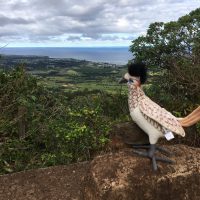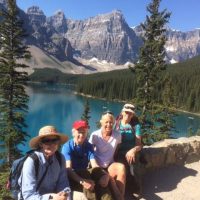We’ll assemble on Day 1 in Salt Lake City and van shuttle to Garrison, NV, with a stop at the visitors center in the park . Our hike starts at the high point of the road at nearly 10,000 ft. to view the ancient Bristlecone Pine, the last remnant of the many glaciers in the park, and a pleasant loop around two beautiful alpine lakes. This is a great introduction to the park.
We start Day 2 starts with a tour of the unique underground world, Lehman Caves. Lehman Caves is actually a single cavern despite the name. It extends a quarter-mile into the limestone and marble that flank the base of the Snake Range. The area first gained notariety through the discovery of these caves, and they are the reason the national park was even considered. After lunch, we will take a shady loop hike deep in the montane forest along two river valleys.
We’ll hike Wheeler Peak on Day 3. Wheeler Peak is the park’s highest point, and the second highest point in the state. It is a true alpine ascent, offering unobstructed views across the entire Great Basin!
Day 4 takes us on an especially scenic loop hike that follows a cascading alpine creek to a pair of classic alpine lakes. It also crosses two high passes and traverses alpine meadows with epic views of the surrounding summits. We’ll also pass by the site of an historic tungsten mine. After this hike we will transfer to Hidden Canyon Retreat – a true oasis tucked into the canyon created by Big Wash river.
On Day 5, we’ll hike to Lexington Arch. The trail begins with a steady climb. Lexington Arch is a six-story limestone formation. There is question about whether it was once a passage in a cave system. It is even possible that Lexington Arch is not an arch at all, but rather it is a natural bridge. While arches are formed by the effects of weathering, bridges are created by the flowing waters of a stream. It is possible that long ago, when Lexington Canyon was not as deep, the waters of Lexington Creek flowed through a cave in the wall of the canyon, and in doing so enlarged the tunnel that became Lexington Arch.
We have a gentle loop planned for Day 6, among the sagebrush and berry shrubs in the grassland, completing our exploration of all 6 habitat zones existing within Great Basin National Park. The shuttle returns us to Salt Lake City for the conclusion of the tour.






